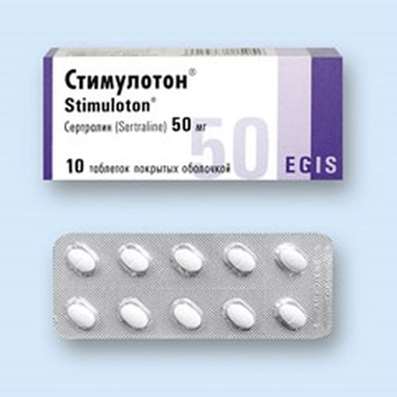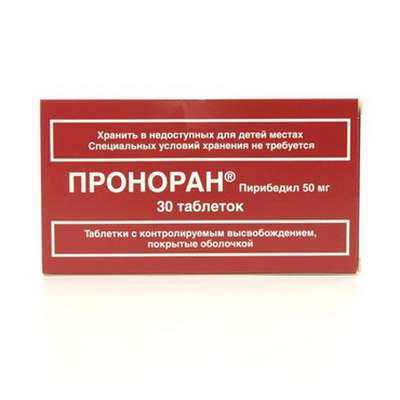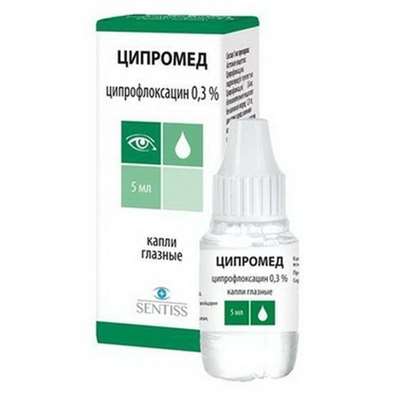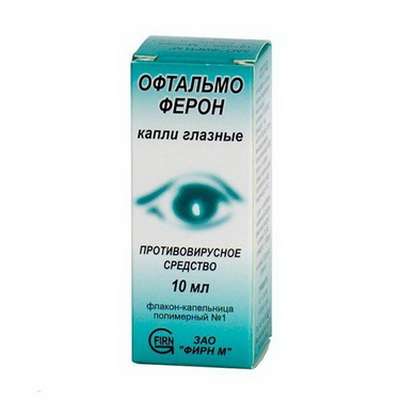Diseases of the brain: how to rescue neurons
20 Dec 2016
Diseases of the brain - the scourge of the twenty-first century. In the world of people suffering from them, spent huge sums - but to cure many of these diseases is no hope. What is the cause of brain disease and what are the prospects for dealing with them.
What is a brain disease?
This disease, which are based on neuronal death. Depending on whether they are killed in a region of the brain shuts down one or the other function of the brain or the body as a whole - for example, reproduction.
Why dying neurons?
The reasons may be different. For example, the acute injury: injuries, strokes - as a result of which the blood flows from the blood vessels and neuronal cell death process begins almost immediately. If you intervene quickly and begin treatment, the therapeutic effect can be very good. In the case of stroke it is about 3-5 hours. But if you tighten and help later, the process is going as a chain reaction will be irreversible, and many areas of the brain take over. Worst of all, if the process is developed in the medulla oblongata, where the respiratory, vasomotor center, - if the person stops breathing, the heart stops working and he immediately dies. If the process goes to the cortex, people lose memory and the ability to recognize and perceive what is happening.
Another large group of brain diseases - chronic, so-called neurodegenerative diseases. They develop over the years - say, 20-30 - without any external manifestations. Man feels completely healthy, but he is a pathological process - dying neurons. In general, the neurons die at all. Even imputed rate of this destruction - four per cent in 10 years. Neurodegenerative diseases but it is greatly increased.
What diseases are neuro-degenerative?
Their circle is wide, but is dominated, of course, Alzheimer's disease and Parkinson's disease. In Parkinson's disease die mainly dopaminergic neurons located in a specific brain region, which is called the nigrostriatal system - and a person is disturbed motor function is coming tremor or stiffness. Most often, these symptoms are mixed in time. In Alzheimer's disease the cholinergic neurons die in the hippocampus and cortex, i.e. neurons, which are responsible for memory and learning, - these functions in humans and suffer. Another disease which is associated with loss of dopaminergic neurons - Huntington's chorea. It manifests itself in impaired cognitive and physical abilities. There is also a disease that affects young people of reproductive age, - hyperprolactinemia. In this case, the death of neurons leads to inhibition of reproductive function and infertility. If the disease run, it becomes irreversible stage - growing pituitary tumor. With the death of neurons and associated depression. It all starts with a reversible functional stage (worsening of mood, anxiety, fatigue, high), but then moves to the level of organic changes.
Why in neurodegenerative diseases, neuronal death so long makes itself felt?
Because the brain is extremely flexible, it has enormous possibilities for compensation. Generally speaking, these features have all organs, but brain they appear to the greatest extent, because from the point of view of evolution is one of the most important structures. So when the symptoms finally appear, it is, on the one hand, it says that the compensatory mechanisms have been exhausted, and on the other - that the number of dead neurons reached a threshold level. This threshold is calculated only for Parkinson's disease: if dopamine is lost by 70-80 percent, the person immediately disturbed motor function.
Please provide examples of compensatory mechanisms.
In Parkinson's disease, as I said, dying neurons that synthesize dopamine - a substance that determines the interaction (chemical signals) between neurons. Not all neurons are dying, and those who are saved, activated, trying to produce more signals. But sooner or later, the number of these chemical signals is reduced: the death of neurons - an irreversible process. And then comes to the fore another group of compensatory mechanisms - the neurons that receive signals become more sensitive and "hear" even those neurons that generate a signal at a very low level, that is "quietly talking".
What are the causes of neurodegenerative diseases?
In most cases, they are not known. Ten years ago, scientists had hoped that neurodegenerative diseases - monogenic, that is responsible for their development of any one gene. In this case, it would be easy to establish the diagnosis and treatment - it would be necessary only to find this gene. But it turned out that the vast majority of patients with disturbed function of many genes, so these diseases of monogenic moved into the category of polygenic.
Another feature: if earlier believed that the disease is caused by the death of only one group of neurons - in strictly defined areas of the brain, it turned out that it is a systemic disease, which extends to many parts of the brain, the peripheral nervous system, internal organs. But the key symptoms from which a truly suffer ill, really depends on a particular group of cells.
Is there a genetic predisposition to these diseases?
There is, but it is a very small percentage of patients - no more than three. There are family-based - they occur in people at a young age, 25-30 years. But in general, this is not a fatal disease if the parents are sick, it is not necessarily sick children.
What percentage of the population in Russia and in the world is sick neurodegenerative diseases?
The number of cases is increasing among people older than 60 years. If we talk about Parkinson's disease, among 60-year-olds - is one percent, then to 70 years, comes to five percent. Alzheimer's age spread even faster. In 60 years - three per cent, 70-75 years - 15-20 percent. This global statistics. Our figures for the incidence must be taken with great caution. It is believed that in Russia and a half million patients with Alzheimer's disease, 300 thousand - Parkinson's disease. But in Russia badly staged diagnostics: in rural areas, people do not go out-surveys. Therefore, to understand the overall trends, it is necessary to address to the American and European experience.
What is the place of these diseases are most common?
Now neurological and psychiatric diseases rank third after cardiovascular diseases and cancer. However, according to forecasts by the World Health Organization, just ten years later they come out on top.
Why?
The number of patients with neurodegenerative diseases every ten years increased by several times. This is a catastrophe. There are three reasons - two of them can be understood by a third - no. First - this elderly diseases: the older the person, the more likely that neuronal death reaches his threshold. Since life expectancy has increased dramatically in the world, and increasing number of elderly people. Though to us this is not true: we have life expectancy 15 years less than in Europe, and much lower than in Japan. The second reason - pollution. Because of this, there is, for example, Parkinson - approximately the same as Parkinson's disease. For example, in the production of harmful heavy metals get into the brain through the nasal passages and cause the death of neurons. In addition, the statistics of the World Health Organization and the Society for the fight against Alzheimer's disease shows that the number of patients is growing most rapidly in developing countries. Why - it is not clear: life expectancy there is low, it means that patients should be less. Perhaps the reason is pollution - ecology in these countries pay little attention. The third factor can not be explained - there is a rejuvenation of the disease, people are starting to get sick at a younger age.
With the highest rate today is increasing the number of depressions, often ending in suicide. One of the reasons - the constant stress which exhausts the person. In addition, I think it can be explained in part by the economic crisis. In this sense, we are in a privileged position. In the West, life is so adjusted that any deviation from the rules completely destabilizes the person, then our people is difficult to knock out of the rut.
How effectively treated chronic diseases of the brain?
Parkinson's disease revealed about 200 years ago, Alzheimer's disease - 100 years ago. During this time, no country in the world have not cured a single patient. Drug therapy should be aimed at preserving and maintaining regulatory neuronal functional activity of neurons involved in compensatory processes. However, as I said, when a person has symptoms of the disease and he turned to the doctor, these neurons had almost no - treated simply nothing.
More recently, 10-15 years ago, scientists thought that you should try to make a diagnosis at the initial stage of a pathological process, only when the neurons begin to die. This occurs at a fairly young age - 35-40 years. If at this stage to begin to heal the sick - to reduce the death rate of neurons, the number of these neurons does not fall to the threshold level even in 90-100 years. This means that the person until the end of life do not feel the symptoms of the disease. I think this is the most promising way.
As can be diagnosed at an early stage? Man must for some signs to understand what happened to him that something was wrong, and seek medical advice?
I think that the person before the onset of symptoms to the doctor will not treat. Therefore, I think the question should be decided by clinical examination of the population in which the clinical precursors of the disease can be identified. The process of neuronal death covers many parts of the brain, and before you start to die in specific for a particular disease areas, they die, for example, in the olfactory bulb - in the area of the brain that is responsible for the sense of smell. In addition, patients in the early stages are constipation, heart failure. These precursors may be indicative of different diseases, and none of them does not indicate a specific disease - so you need to collect a whole bunch of precursors. Changing the functions of the nervous system, and - as a result - the internal organs should be reflected in the composition of the blood plasma and in the functional activity of its cells. These changes may also serve as markers of neurodegenerative diseases. When all the precursors are in humans, it is included in the risk - of thousands of people get into it three to five. And these people need to carry out a differential diagnosis to make sure that we are really talking about Parkinson's or Alzheimer's disease. For this there is an expensive and rare technique - positron emission tomography. It is non-invasive (no one gets into the human brain) neuroimaging (you can see all of the cellular and molecular processes that take place in the brain) method. If it turns out that human neurons are poorly synthesized small chemical signal, and at the same time he revealed all precursors - so it definitely needs to be treated.
Is not it easier when clinical examination immediately send all for such imaging?
This method will never be used for general clinical examination, even in the richest countries. It is costly and special technical conditions: the isotopes, which are used for imaging, live long, from half to two-three hours, so you need a special neurochemical laboratory with a cyclotron, which will synthesize them and then administered to a patient. On their own devices - this iron, their work depends on a set of tests, the compounds, which are in the hands of professionals. Unfortunately, in Russia it is very difficult to get a license to use the necessary tests. Therefore, we have such a diagnosis is not carried out at all.
How can inhibit neuronal death?
There are several groups of substances. Generally, any cell death associated to oxidative stress: accumulate in the cell free radicals, which ultimately kill it. This counteract drug - antioxidants. But I think that preventive treatment can be based on the use of growth, or neurotrophic factors. This neuropeptides - molecules that are composed of amino acids. They have three important properties. Firstly, their action aimed at stopping or slowing neuronal death. Secondly, they stimulate neuronal differentiation during development of the brain. Third, they manage compensatory processes. This is a unique combination. Different peptides dominated by different properties, and accordingly they have different effects on certain neurons. Therefore, before using them for the treatment, it is necessary to study them carefully.
What can be a source of growth factors?
They can be prepared chemically, genetically engineered, or a combinatorial manner. But most importantly - they are synthesized in the body in virtually all cells and is particularly active in the brain. So, you can either use artificial growth factors, or learn how to manage their natural synthesis in the brain. The second option is preferable, since it reduces the risk of side effects. Already there are specific substances that stimulate the production of growth factors. Even in Soviet times, apparently by order of the Ministry of Defence, Institute of molecular genetics to develop drugs for astronauts and high-altitude pilots, which improves brain activity, especially in extreme situations - it is called Semax.
However, as I have already said, it is necessary not only to increase the synthesis of growth factors, but also to manage this process. You have to understand, in what situations and areas of the brain is needed, and can do, and what - no, because growth factors under certain conditions can cause the formation of tumors. If their concentration is very low (10-11), they have all the positive properties. But this concentration is increased by three orders of magnitude, and growth factors will begin to destroy cells, particularly neurons.
If we talk about the artificially synthesized growth factors that arises another question: how to deliver them to the brain? Peptides very bad pass or not pass the blood-brain barrier that protects the brain against external harmful influences (bacteria, toxic substances from the environment may enter the bloodstream and in the brain - is not present, and on the contrary, most substances from the brain misses in the systemic circulation). Peptides to drag through the barrier, they can be packaged in a lipid capsule (everything dissolves in lipids is well into the brain) or plant to nanoparticles. Another way - to take these substances inter-nasally: they reach the brain in the course of the cranial nerves.
If the issue of delivery of peptides decide today, a number of other problems requires long and serious work. This is primarily a problem and maintain the desired dosage concentration of the substance and its targeted delivery to just the neurons are affected.
There is much talk about stem cells. Can they be used for the treatment of neurodegenerative diseases?
Within the framework of the European program I'm almost 15 years in the use of cellular technology for the treatment of Parkinson's disease - and was disappointed with this approach. The creator of this program, a well-known Swedish scientist Anders Borkland, guided by such considerations: if something dies, such as heart, kidney, liver, and their change; then stop working if the neurons that synthesize chemical signal, you need to put the pump, which would signal that rocked. He decided that the ideal pump - the neurons themselves. If you move the neurons from adult to an adult, they do not survive and die. Therefore it is necessary to use embryonic neurons - in the brain of an adult organism, they will be well developed and work. The experiment in rats given ideal therapeutic effect. However, during trials in humans the condition of patients improved within six months, a maximum of a year, and then everything will come to naught. Deterioration, thank God, no one was, but the therapeutic effect was temporary. Therefore, this technology in the clinic is not recommended to use.
The problem turned out to be much more complicated than we thought. It was found that in rodents brain is much more plastic than people. In humans, each neuron is connected also with a dozen or even two dozen of thousands of other neurons via specialized - synaptic contacts. Therefore, to cure a person should not just download the necessary material, but also to reproduce all of this microarchitectonics - and to do it is not yet possible.
Are there other, non-drug ways to treat brain diseases?
As you know, if you turn off the brain from all the external information obtained through vision, hearing, motor activity, and so on. E., It quickly degrades. Information trains the brain and makes it work. This feature can also be used in neurodegenerative diseases. At last year's forum "Science and technology in society" Kyoto professor at Columbia University made a stunning report. She spoke about the psychological training - to memorize, to mental effort - which was held for people with Alzheimer's disease began. It turned out that this practice slows down and even for some time, stops the progression of the disease.
If we talk about the method of early diagnosis and treatment, through many years, according to yourvision, it will be applied in practice?
I think success on this path will be achieved in five years, a maximum of ten. This time could be significantly reduced if experts from different countries have joined forces. A few years ago, we agreed to work together with the US National Institutes of Health, which are the same studies. But then they suddenly refused - probably for their competition in this field has become a defining political issue.
We are all the time talking about the globalization of the world, that the new challenges confronting humanity, which can not be resolved by one country, even the richest, that it is necessary to unite. So far, unfortunately, it's basically a word. No one understands how to unite: how to match national economic, political and scientific ambitions, on the one hand, and the interests of patients - on the other.

 Cart
Cart





